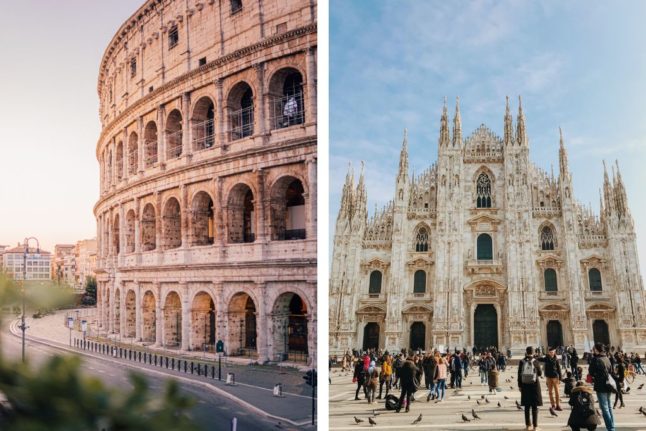Italy is a great country for students, with accessible universities and some of the top schools in the world. Milan’s Politecnico and the Sapienza University of Rome, for example, are ranked among the top 100 in Europe.
A recent QS Best Student Cities ranking meanwhile named Milan and Rome as the best cities in Italy for students to live in.
But which is better, really, and why?
Of course, it depends on what you’re looking for. “Milan is a more organised city regarding the services, cleaner and open-minded, but Rome is pure magic. So it depends on your opportunities in both cities and your personality and what you can tolerate”, Sammer Salah, a 30-year-old Egyptian citizen who has lived in several Italian cities over the last four years, tells The Local.
READ ALSO: OPINION: Why Milan is a much better city to live in than Rome
The dichotomy between the organised city versus the “city with soul” is similar to known feuds between New York versus LA, Sao Paulo versus Rio de Janeiro or, as a Brit might jokingly say, “London versus anywhere Northern”, comes up often in conversations with immigrants in Italy.
What sets Milan apart?
Milan is known for being Italy’s central financial hub and the home of the Italian high fashion industry. Located in the north of the country, it’s also very well connected (by plane, train, or road) to other European countries.

It can also be a fun and friendly city, with many international residents, lots of cultural events and busy city life.
It’s home to Italy’s best university, the Politecnico di Milano, and surrounded by lovely towns, lakes and close to the mountains.
REVEALED: What studying in Italy is really like and what you should expect
“Milan is generally a younger city. Both have a lot of universities, but Milan has a few large universities that also cater internationally. You also have a lot more young professionals in Milan because it’s where all the industry is”, says Carlos Diaz, who is from the United States and has lived in both Italian cities.
What sets Rome apart?
Rome is, of course, Italy’s capital and one of the most historical cities in the world. Some students say it has a more relaxed atmosphere when compared to busy Milano and the Italian city also gets praise for its cultural importance and beauty.
The capital is also well connected to other Italian cities and you can easily find cheap flights to many European destinations. Even though it doesn’t near other countries like Milan (Rome is located almost in the middle of Italy), it is closer to the sea – and to the famous Italian beach destinations in the south.
READ ALSO: Five things to know before you apply for an Italian student visa
“Milan is more organised when it comes to offices, traffic, people in general, but Rome has so much more soul, the people, sunsets, the eternal city, the vibe”, writes fashion editor Margherita, who added: “In my 20s, I would have chosen Milan for sure, in my 30s, Rome”.
What about the cost of living?
When it comes to the cost of living, Milan is, in general, more expensive than Rome. It has a reputation for being pricey, especially compared to other Italian cities – including the capital.
Rent can also set you back quite a bit.
A one-bedroom apartment in Milan’s city centre costs, according to Numbeo’s cost of living database, an average of around €1,240, which is 29 percent higher than Rome.
But on the other hand the infrastructure is fantastic, and Milan has one of the best public transport systems in Italy.
READ ALSO: Ten things to expect when renting an apartment in Italy
Overall you’d need a monthly income of €3,442 in Milan to maintain the same standard of living that you’d have on €3,000 in Rome, according to Numbeo.
While most things are more expensive in Milan, as salaries tend to be higher, local purchasing power in the northern city is also higher than in Rome.
The QS Ranking
The QS ranking uses the opinions of current international students in cities with more than 250,000 people and home to at least two universities featured in the QS World ranking.
They evaluate a series of indicators relating to university rankings, student mix, “desirability”, which includes questions like what are the pollution levels and how safe is the city, employer activity, affordability and “student voice”, with questions like what proportion of students continue to live in the city after graduation.
Milan and Rome did well in the survey, but Milan ranked higher in the top 50 best student cities while the Italian capital was among the top 100.
See more in The Local’s studying in Italy section.




 Please whitelist us to continue reading.
Please whitelist us to continue reading.
Member comments